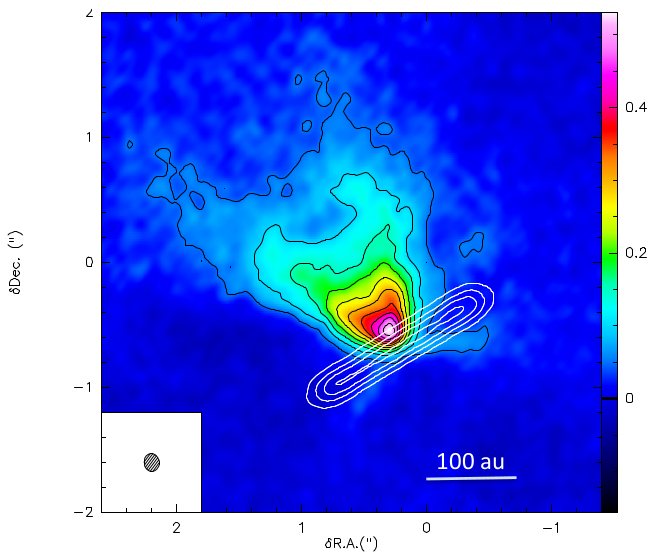| EPoS Contribution |
|
Rotating Molecular Cavities Scrutinized by ALMA: What Can They Tell Us about Magnetic Fields in Protoplanetary Disks ?
Catherine Dougados IPAG, Grenoble, FR | |
| Powerful atomic jets and molecular outflows are observed in young protostars at all stages of active accretion, from the young embedded Class 0 and Class 1 phases to the later optically revealed T Tauri or Class 2 phase. The origin of the ejection, its role in angular momentum extraction and impact on protoplanetary disk evolution remain as fundamental open questions in star formation. Studies at high angular and spectral resolution of molecular outflows are now providing important new clues to these questions. The recent detection of a small scale CO cavity/outflow in the prototypical edge-on HH 30 T Tauri star challenges the traditional interpretation of molecular outflows as swept-up material. Instead these low velocity cavities could trace matter directly ejected from the inner regions of the disk. I will discuss recent band 6 ALMA observations in 12CO and 13CO of the prototypical HH 30 system and their implications for the origin of the CO cavity/outflow and its impact on the disk evolution. These observations also reveal direct strong evidence of strong vertical sedimentation and radial segregation of millimeter dust. Finally the binary scenario put forward for the origin of the HH 30 jet wiggling is strongly challenged by the ALMA observations. Preliminary results from ALMA Cycle 3 & 5 observations of a Class I disk/outflow source, DG Tau B, will be also discussed. | |
 | |
| Caption: Integrated 12CO(2-1) emission (color image) showing the HH30 small scale outflow originating from the inner regions of the protoplanetary disk. 1.3 mm continuum emission is overlaid in white contours. | |
| Collaborators: F. Louvet, Calan Obs,, CL S. Cabrit, LERMA, FR F. Menard, IPAG, FR C. Pinte, IPAG, FR D. Mardones, Calan Obs., CL |
Suggested Session:
Protostellar disks |

